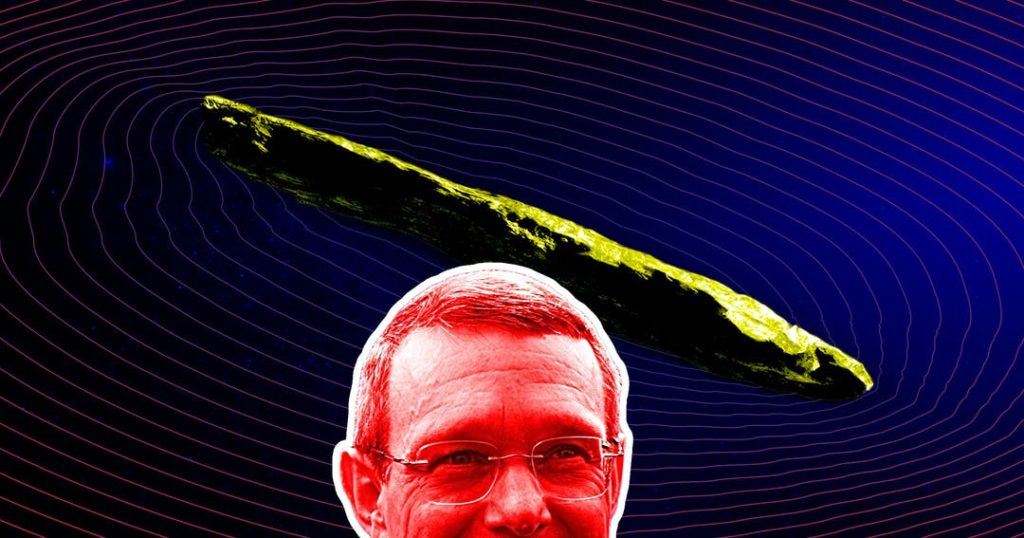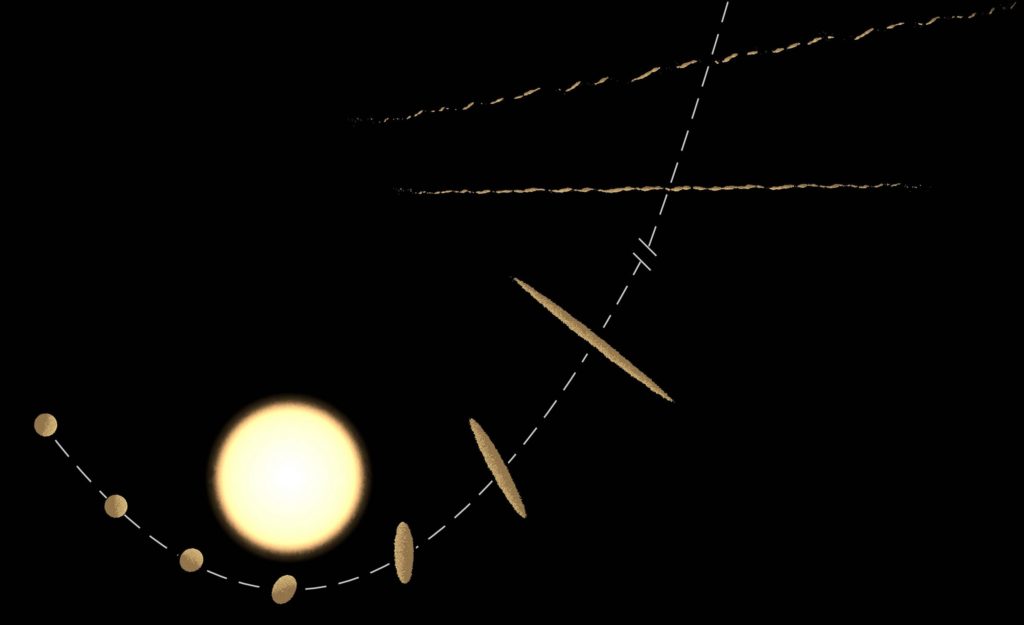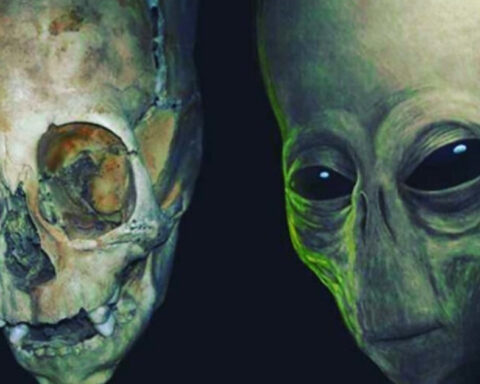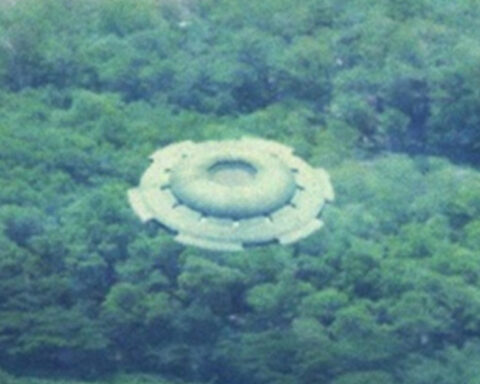According to Harvard professor Avi Loeb, an alien spacecraft visited our solar system in 2017 and sent a “message” to the academic community.
In October 2017, Canadian astronomer Robert Weryk made an incredible discovery on an ordinary day.

Weryk witnessed an odd, elongated object roughly the size of a football field, speeding through the solar system 196,000 miles away, thanks to data from the University of Hawaii’s Pan-STARRS1 telescope at the Kaleakala Observatory in Hawaii.
The strangest part was that it appeared to be speeding up somewhat, propelled by an unknown power.
Because of its peculiar course, it passed close to our Sun, prompting scientists to assume that the space object, later dubbed “‘Oumuamua” or “explorer” in Hawaiian, was the first visitor from beyond our solar system to be directly witnessed.
Countless attempts have been made over the last three years to explain ‘Oumuamua’s unique characteristics. Some speculated that it was a hydrogen iceberg, while others speculated that it was a space rock going through space that had been wrapped in a coating of “organic sunscreen.”
The solution could be enticing for Avi Loeb, an astronomer and physics professor at Harvard University.
Their contentious argument is that ‘Oumuamua was a probe sent by an extraterrestrial civilization, an explanation that has gotten a lot of press and, predictably, divided specialists.
Loeb examines his fascinating notion in his new book, “Alien: The First Sign of Intelligent Life Beyond Earth,” which uses the story of ‘Oumuamua to create the basis for a far bigger conversation:
The fight to be taken seriously by a scientific community that has long debated the presence of extraterrestrial intelligence.
Loeb claimed in an interview with Futurism that scientists’ “explanations fell short of describing the many oddities and peculiarities of” Oumuamua. According to him, the scientific community “advocated for something we’ve never seen before.”
The “dust rabbit” concept, proposed by Loeb, theorized that ‘Oumuamua’s peculiar trajectory may be explained by extremely low density.
“The trouble with that is, I don’t think a dust bunny the size of a football field would survive a journey of millions of years into interstellar space,” Loeb said, dismissing that theory. “I mean, I don’t think it’ll hold together.”

The scientific explanations that attempted to fit ‘Oumuamua into an existing scientific framework did not make sense to Loeb.
“The point is that you can’t say it’s natural on the one hand, and then when you try to explain it using natural processes, you end up with something we’ve never seen before,” Loeb stated.
That’s how it ended up in the hands of aliens. ‘Oumuamua may have been a solar sail dispatched to Earth from another star system, according to Loeb’s alien idea.
A solar sail, sometimes known as a dinghy sail, is a type of spaceship propulsion that converts the low pressure of solar radiation into motion.
Earth scientists have already tried out the concept; in 2019, the charity Planetary Society launched LightSail-2, a craft that employs 340 square feet of an ultra-thin coating of reflective polyester film to gradually propel itself.
According to Loeb, the sudden acceleration of ‘Oumuamua could be explained by a solar sail propelled by starlight.
If it’s not a dust rabbit, the astronomer deduced that the interstellar visitor must be incredibly tiny, probably “less than a millimeter thick” according to his calculations.
The conclusion of the solar sail for the astronomer was to follow “steps, like Detective Sherlock Holmes.” When all other options have been ruled out, the only option left is the truth.
For many astronomers in the area, Loeb’s conclusion is an exaggeration, since they have frequently contested it.
An international team of academics argued in a 2019 paper published in the journal Nature Astronomy that they found “no convincing evidence to favor an extraterrestrial explanation” for ‘Oumuamua.
“‘Oumuamua’s attributes are consistent with a natural origin,” astronomer Matthew Knight of the University of Maryland, a co-author of the paper, told Reuters at the time, “and an extraterrestrial explanation is not warranted.”
They claimed that ‘Oumuamua is a “planetesimal,” or a small part of a planetary building component that has recently strayed through our solar system.
Weryk, the man who first discovered the object, had nothing good to say about Loeb’s theory. In 2018, he told the CBC, “Honestly, that’s a little of crazy guesswork.”
Weryk continued, “I believe it is a leftover of another solar system.” “It was purely coincidental, and we were quite fortunate to be operating the telescope that night and gazing in that direction.”
These rebuttals appear to have bolstered Loeb’s inquiries into ‘Oumuamua’s extraterrestrial origins, as well as prompted him to make a passionate plea to the scientific community to take SETI research seriously, as recounted in his book.
It’s all about reading the stars with an open mind for Loeb.
He told Futurism that modesty is his guiding concept. “If we are not arrogant, if we are modest, we would reply that life as we know it must be ordinary.”
“We now know from the Kepler satellite data that roughly half of the Sun-like stars have a planet like Earth, roughly the same distance away, so it can have liquid water and the chemistry of life as we know it,” Loeb said, referring to a star system’s “habitable zone,” which could theoretically support life.






